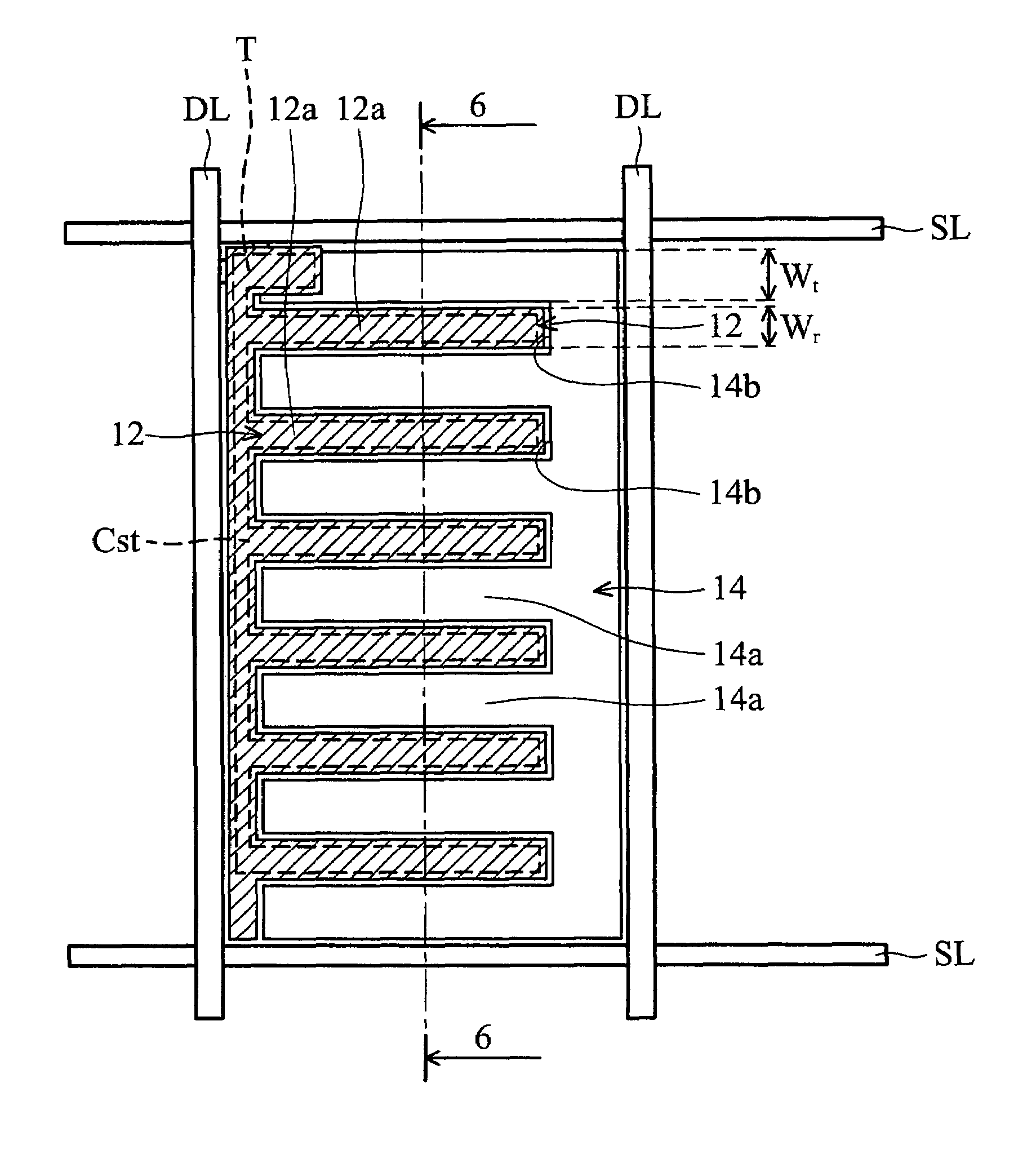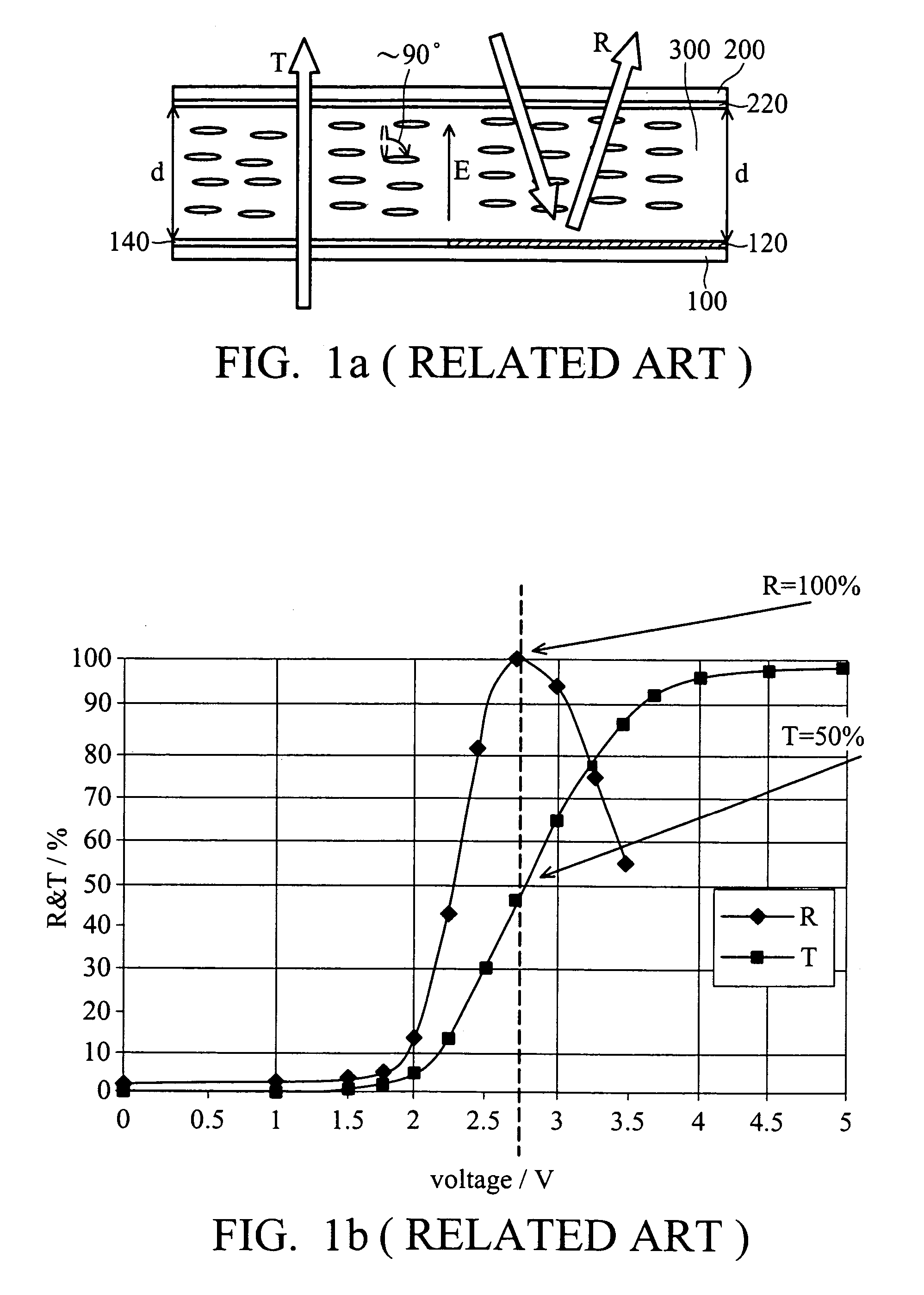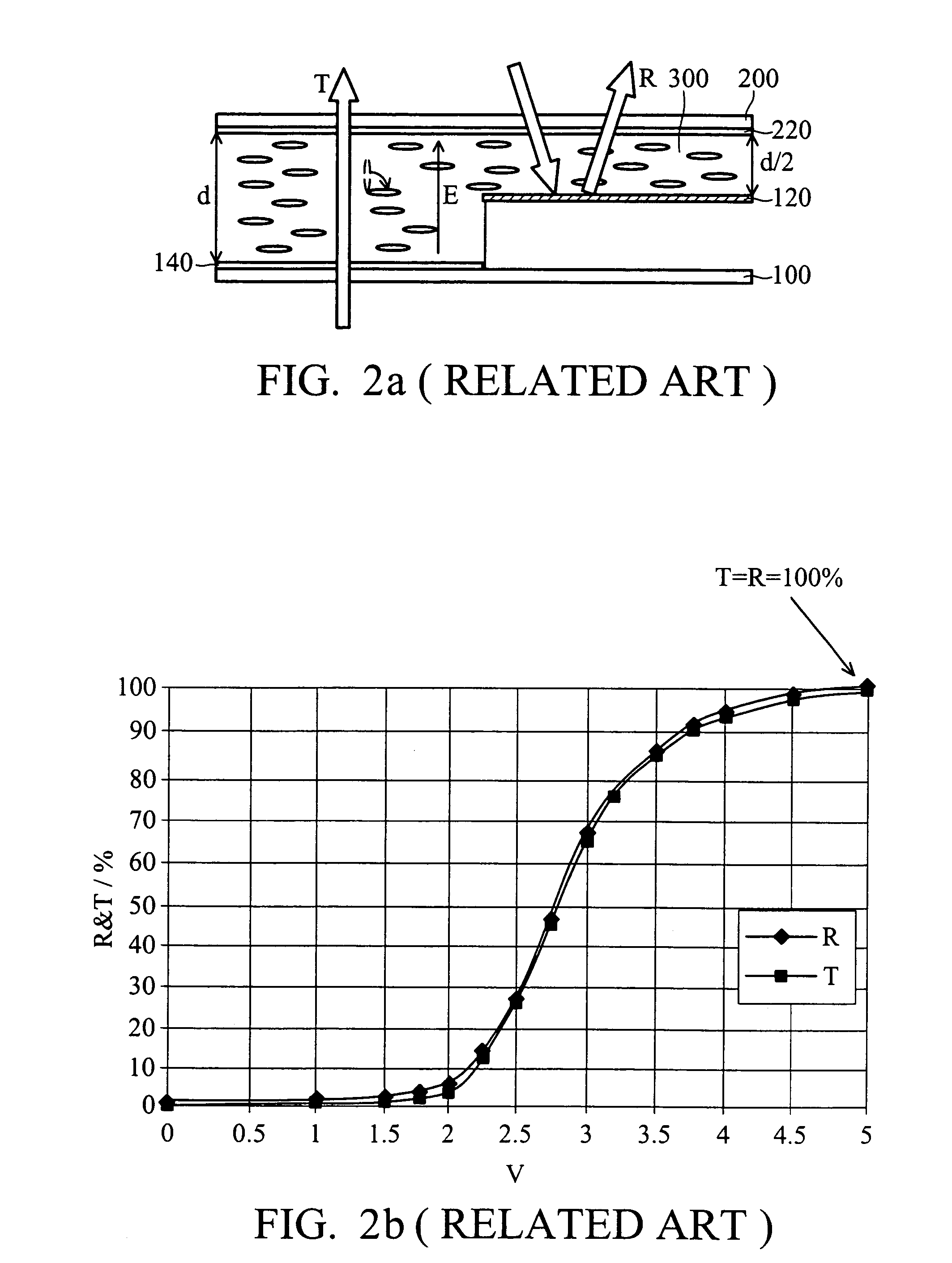Transflective liquid crystal display
a liquid crystal display and transmissive technology, applied in non-linear optics, instruments, optics, etc., can solve the problems of high power consumption, complex structure, and ineffective light conversion of transmissive lcd, and achieve the effect of achieving the effect of equal light efficiency
- Summary
- Abstract
- Description
- Claims
- Application Information
AI Technical Summary
Benefits of technology
Problems solved by technology
Method used
Image
Examples
first embodiment
[0027]FIG. 3 is a plan view of a pixel of a transflective liquid crystal display panel according to the present invention. FIG. 4a is a cross-section taken along line 4-4 of FIG. 3. Referring to FIGS. 3 and 4a, the transflective LCD panel includes an array substrate S1 and an opposing substrate 20 spaced apart from the array substrate S1. The array substrate S1 includes a substrate 10, a plurality of scanning lines (SL, gate lines), a plurality of data lines (DL), a reflector 12, a transmissive electrode 14, and a planarization layer 16 formed between the reflector 12 and the transmissive electrode 14. The opposing substrate 20 has a common electrode 22 below it. A liquid crystal layer 30 is interposed between the transmissive electrode 14 and the common electrode 22.
[0028]Scanning lines (SL) extend along an X axis, data lines (DL) extend along a Y axis, and they cross each other to define a plurality of pixel regions. The pixel region includes a transmission region T and a reflecti...
second embodiment
[0035]FIG. 5 is a plan view of a pixel of a transflective liquid crystal display panel according to the present invention. FIG. 6a is a cross-section taken along line 6-6 of FIG. 5. Referring to FIGS. 5 and 6a, the transflective LCD panel includes an array substrate S2 and an opposing substrate 20 spaced apart from the array substrate S2. The array substrate S2 includes a substrate 10, a plurality of scanning lines (SL, gate lines), a plurality of data lines (DL), a reflector 12, a transmissive electrode 14 located in the same level as the reflector 12, a storage capacitor Cst, and a planarization layer 16 formed between the reflector 12 and the storage capacitor Cst. The opposing substrate 20 has a common electrode 22 below it. A liquid crystal layer 30 is interposed between the transmissive electrode 14 and the common electrode 22.
[0036]Scanning lines (SL) extend along an X axis, data lines (DL) extend along a Y axis, and they cross each other to define a plurality of pixel region...
PUM
| Property | Measurement | Unit |
|---|---|---|
| width | aaaaa | aaaaa |
| tilt angle | aaaaa | aaaaa |
| width Wr | aaaaa | aaaaa |
Abstract
Description
Claims
Application Information
 Login to View More
Login to View More - R&D
- Intellectual Property
- Life Sciences
- Materials
- Tech Scout
- Unparalleled Data Quality
- Higher Quality Content
- 60% Fewer Hallucinations
Browse by: Latest US Patents, China's latest patents, Technical Efficacy Thesaurus, Application Domain, Technology Topic, Popular Technical Reports.
© 2025 PatSnap. All rights reserved.Legal|Privacy policy|Modern Slavery Act Transparency Statement|Sitemap|About US| Contact US: help@patsnap.com



